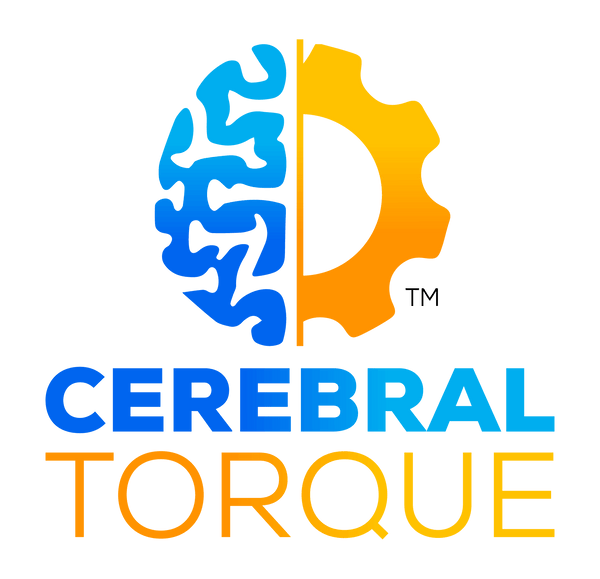
Deep Dive into the Pathophysiology of Trigeminal Autonomic Cephalalgias
Cerebral TorqueShare
1. Trigeminal autonomic reflex
2. Hypothalamic activation
3. Neuropeptide involvement
4. Autonomic symptoms and cranial parasympathetic activation
5. Final thoughts on TAC pathophysiology
Trigeminal autonomic cephalalgias (TACs) are a group of primary headache disorders that cause unilateral head pain along with pronounced cranial autonomic symptoms on the same side. The TAC family includes cluster headache, paroxysmal hemicrania, short-lasting unilateral neuralgiform headache attacks with conjunctival injection and tearing (SUNCT), short-lasting unilateral neuralgiform headache attacks with cranial autonomic symptoms (SUNA), and hemicrania continua. While the precise mechanisms underlying TACs are still being unraveled, current evidence points to a complex interplay between the trigeminal pain pathways, autonomic nervous system dysfunction, and central brain regions like the hypothalamus. Let's take a closer look at each of these pathophysiologic processes:
1. Trigeminal autonomic reflex
The trigeminal nerve carries sensory information from the face, anterior scalp, and dura mater. Nociceptive afferents from the trigeminal nerve synapse in the trigeminal nucleus caudalis in the brainstem, which then projects to higher order pain processing centers. Importantly, there are also direct and indirect connections between trigeminal afferents and autonomic pathways, including the superior salivatory nucleus which controls cranial parasympathetic outflow. Stimulation of trigeminal nociceptors, for example by dural blood vessel irritation or an as-yet-unknown TAC trigger, can therefore reflexively activate cranial parasympathetic efferents. This trigeminal autonomic reflex is thought to be central to TAC pathophysiology, underlying both the severe unilateral pain and the autonomic symptoms like lacrimation, rhinorrhea, and eyelid edema. In TACs, this reflex may be pathologically disinhibited or hyperactive. Anatomical studies have shown direct connections between the sphenopalatine ganglion (SPG), a key parasympathetic relay center, and the trigeminal ganglion. Neuromodulation of the SPG can abort cluster headache attacks in some patients, supporting its role in symptom generation.
2. Hypothalamic activation
Brain imaging has revolutionized our understanding of TAC pathophysiology by demonstrating a key role of the hypothalamus, particularly the posterior hypothalamic region. Positron emission tomography (PET) studies have shown increased blood flow in the posterior hypothalamus during attacks of cluster headache, paroxysmal hemicrania, SUNCT, and hemicrania continua. The hypothalamus is a complex brain structure involved in homeostatic functions, pain modulation, and autonomic regulation. It has bidirectional connections with trigeminal nociceptive pathways and can both facilitate and inhibit pain signaling. Hypothalamic activation in TACs is thought to occur in a permissive or triggering manner, possibly driving the trigeminal autonomic reflex and leading to the characteristic attack profiles seen in these disorders. Cluster headache, the most common TAC, is known for its clocklike circadian rhythmicity and seasonal predilection, implicating hypothalamic control of biological rhythms in attack onset. Alterations in hormones like melatonin and cortisol that are under hypothalamic control have been documented in cluster headache patients. Direct hypothalamic stimulation can trigger cluster attacks, and deep brain stimulation of the posterior hypothalamus is an effective treatment for refractory cases. The exact role of the hypothalamus differs between TAC subtypes. For example, while posterior hypothalamic activation is seen during attacks of paroxysmal hemicrania and hemicrania continua, it is not observed in experimentally provoked attacks using nitroglycerin or capsaicin. This suggests the hypothalamus may have a more modulatory rather than triggering role in these TACs compared to cluster headache.
3. Neuropeptide involvement
Activation of the trigeminovascular system leads to release of vasoactive neuropeptides like calcitonin gene-related peptide (CGRP), substance P, and pituitary adenylate cyclase-activating peptide (PACAP). These neuropeptides are involved in neurogenic inflammation, vasodilation, and pain signaling. CGRP, in particular, has emerged as an important molecular player and therapeutic target in headache disorders. CGRP levels are elevated during cluster headache and paroxysmal hemicrania attacks. In cluster headache, attack frequency and severity correlate with CGRP levels. Monoclonal antibodies targeting CGRP or its receptor have shown efficacy in episodic and chronic cluster headache prevention. PACAP is another neuropeptide of interest in TACs. Like CGRP, PACAP levels are increased during cluster attacks. PACAP can trigger migraine-like attacks when given exogenously, and anti-PACAP antibodies are being investigated as migraine treatments. However, the role of PACAP in TACs is still uncertain.
4. Autonomic symptoms and cranial parasympathetic activation
In addition to trigeminal distribution pain, all TACs are characterized by prominent cranial autonomic symptoms. These include lacrimation, conjunctival injection, nasal congestion, rhinorrhea, eyelid edema, and forehead/facial sweating. Ocular and nasal symptoms predominate and are attributed to cranial parasympathetic activation, while sympathetic impairment may explain the miosis and ptosis occasionally seen. The cranial autonomic symptoms in TACs are more severe and consistent than those sometimes seen in migraine, suggesting a greater degree of parasympathetic activation. This may relate to a stronger or more disinhibited trigeminal autonomic reflex, differences in central autonomic control, or local neurotransmitter/receptor variations. Cluster headache and paroxysmal hemicrania are both defined by the presence of cranial autonomic symptoms, while hemicrania continua is characterized by a more mild "autonomic background." In SUNCT/SUNA, the pain is very brief but the autonomic symptoms are prominent. These clinical differences suggest that while parasympathetic activation is a common thread, the details of how and to what degree it is engaged may differ between TAC subtypes.




